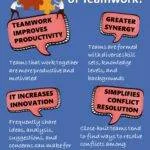
The Smoky Room Experiment
The smoky room experiment is a great example of how much people rely on the responses of others to guide their actions.
If you saw someone in trouble, do you think you would try to help? Psychologists have found that the answer to this question is highly dependent on the number of other people present.
We are much more likely to help when we are the only witness but much less likely to lend a hand when we are part of a crowd.
The phenomenon came to the public’s attention after the gruesome murder of a young woman named Kitty Genovese. According to the classic tale, while multiple people may have witnessed her attack, no one called for help until it was much too late.
This behavior was identified as an example of the bystander effect, or the failure of people to take action when there are other people present.
In reality, several witnesses did immediately call 911, so the real Genovese case was not a perfect example of the bystander effect.
The Experiment
In one classic experiment, researchers had participants sit in a room to fill out questionnaires. Suddenly, the room began to fill with smoke.
In some cases the participant was alone, in some there were three unsuspecting participants in the room, and in the final condition, there was one participant and two confederates. In the situation involving the two confederates who were in on the experiment, these actors ignored the smoke and went on filling out their questionnaires.
- When the participants were alone, about three-quarters of the participants left the room calmly to report the smoke to the researchers.
- In the condition with three real participants, only 38% reported the smoke.
- In the final condition where the two confederates ignored the smoke, a mere 10% of participants left to report the smoke.
The experiment is a great example of how much people rely on the responses of others to guide their actions. When something is happening, but no one seems to be responding, people tend to take their cues from the group and assume that a response is not required.


